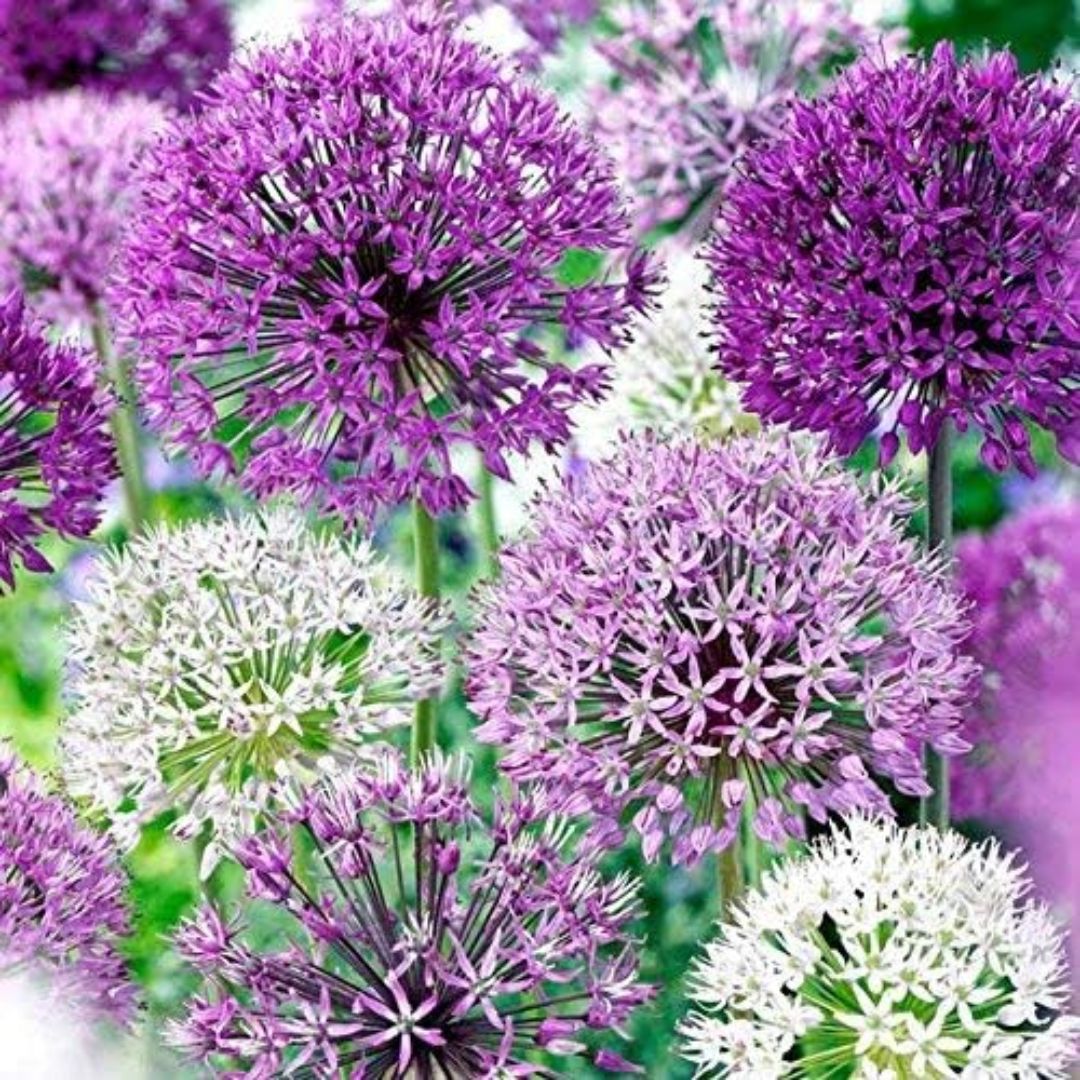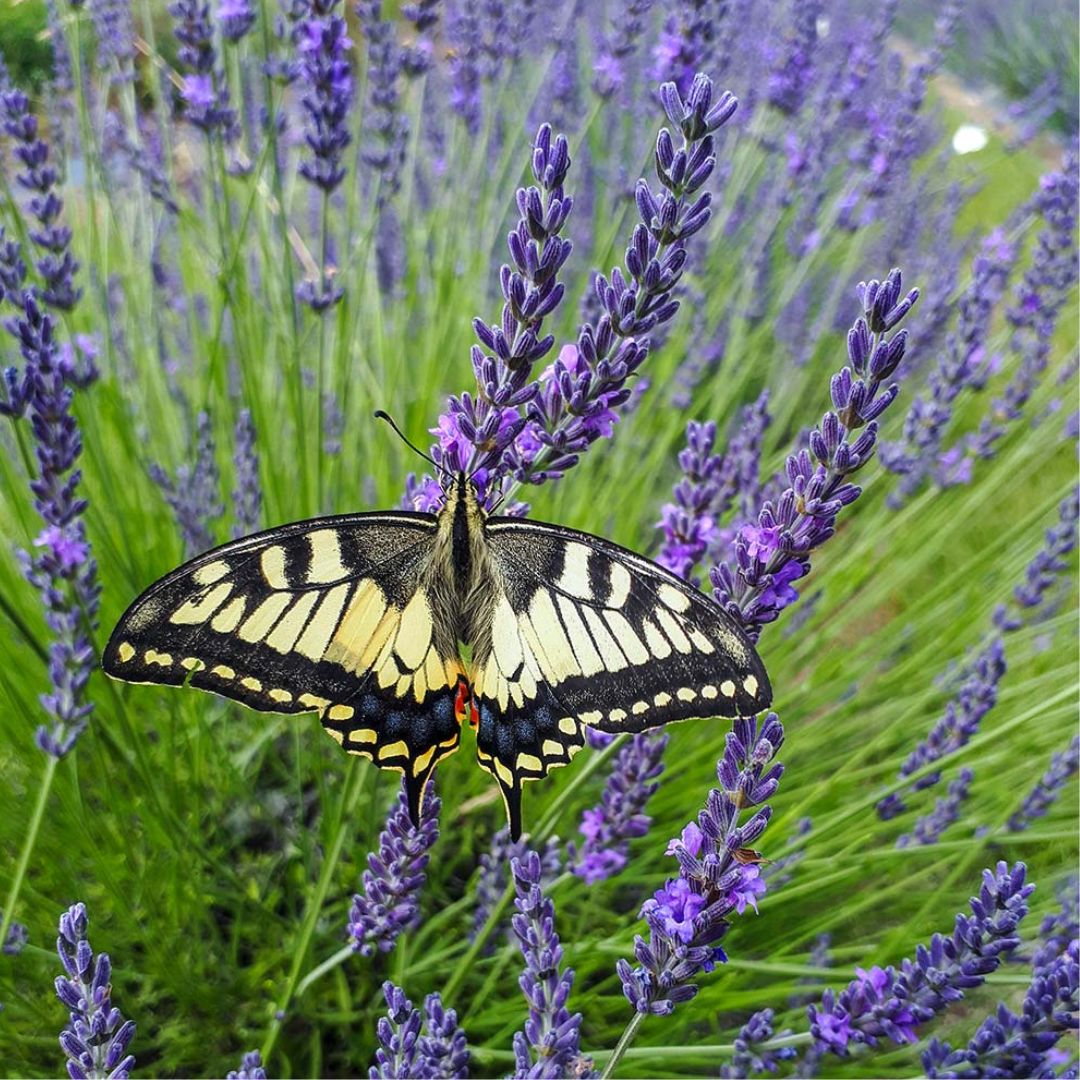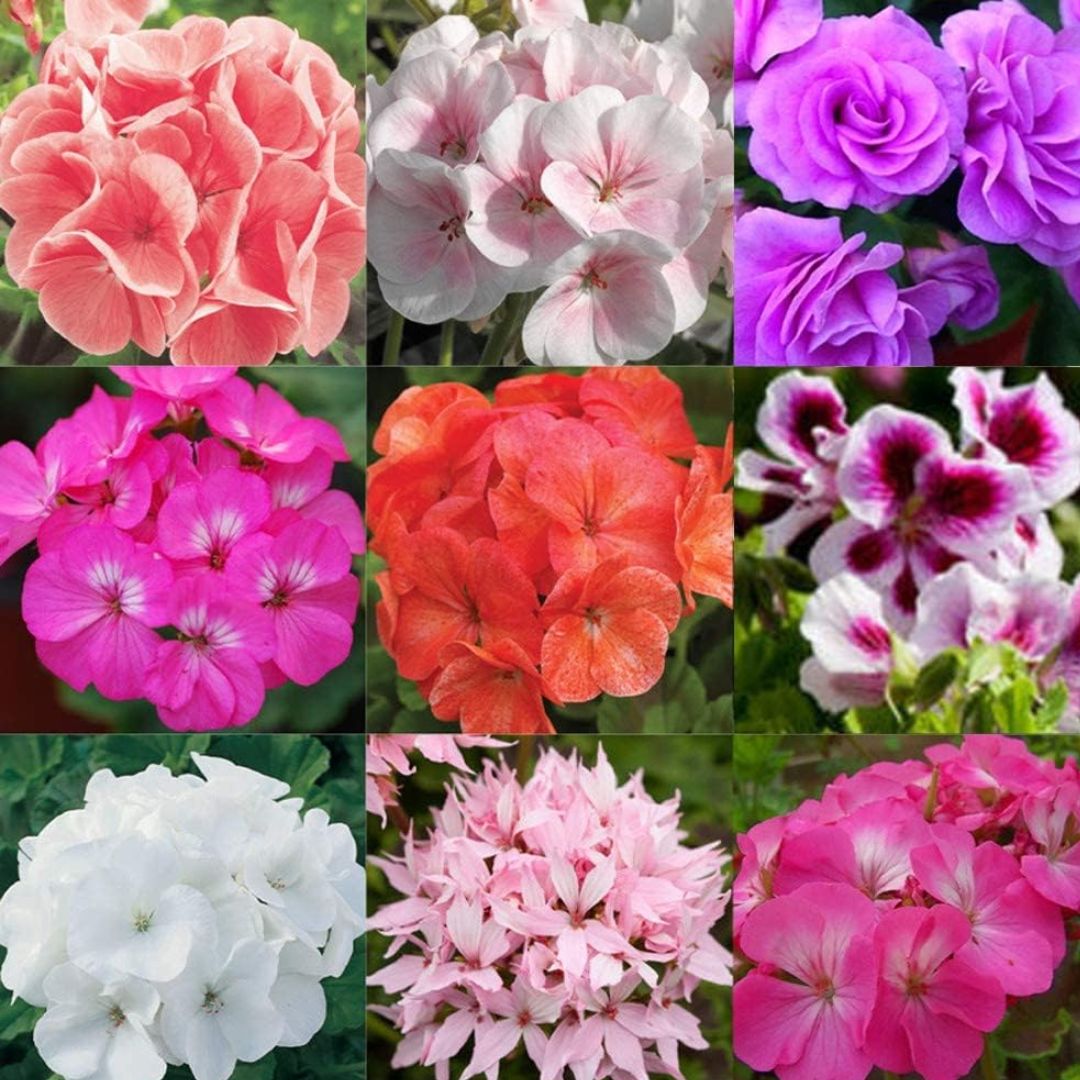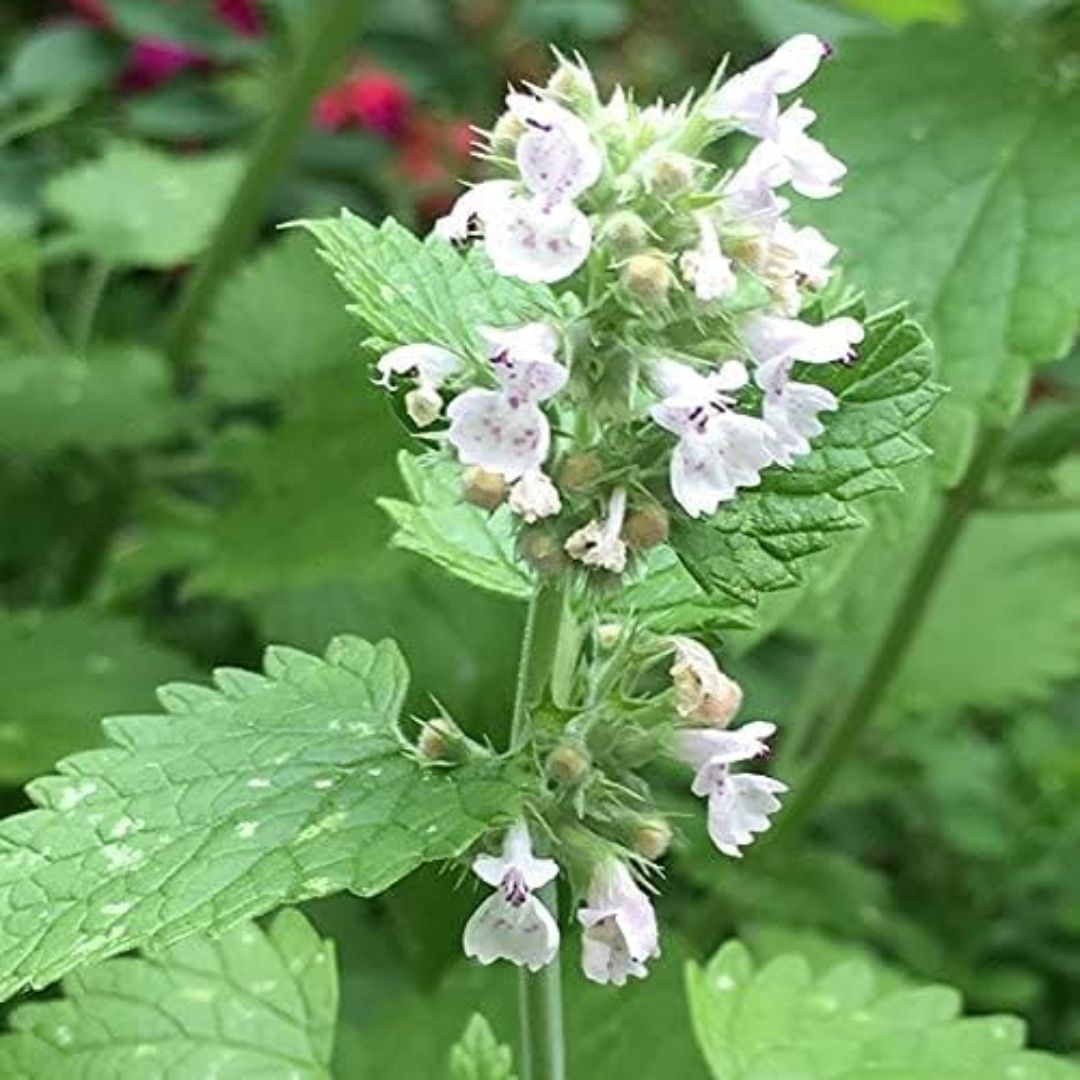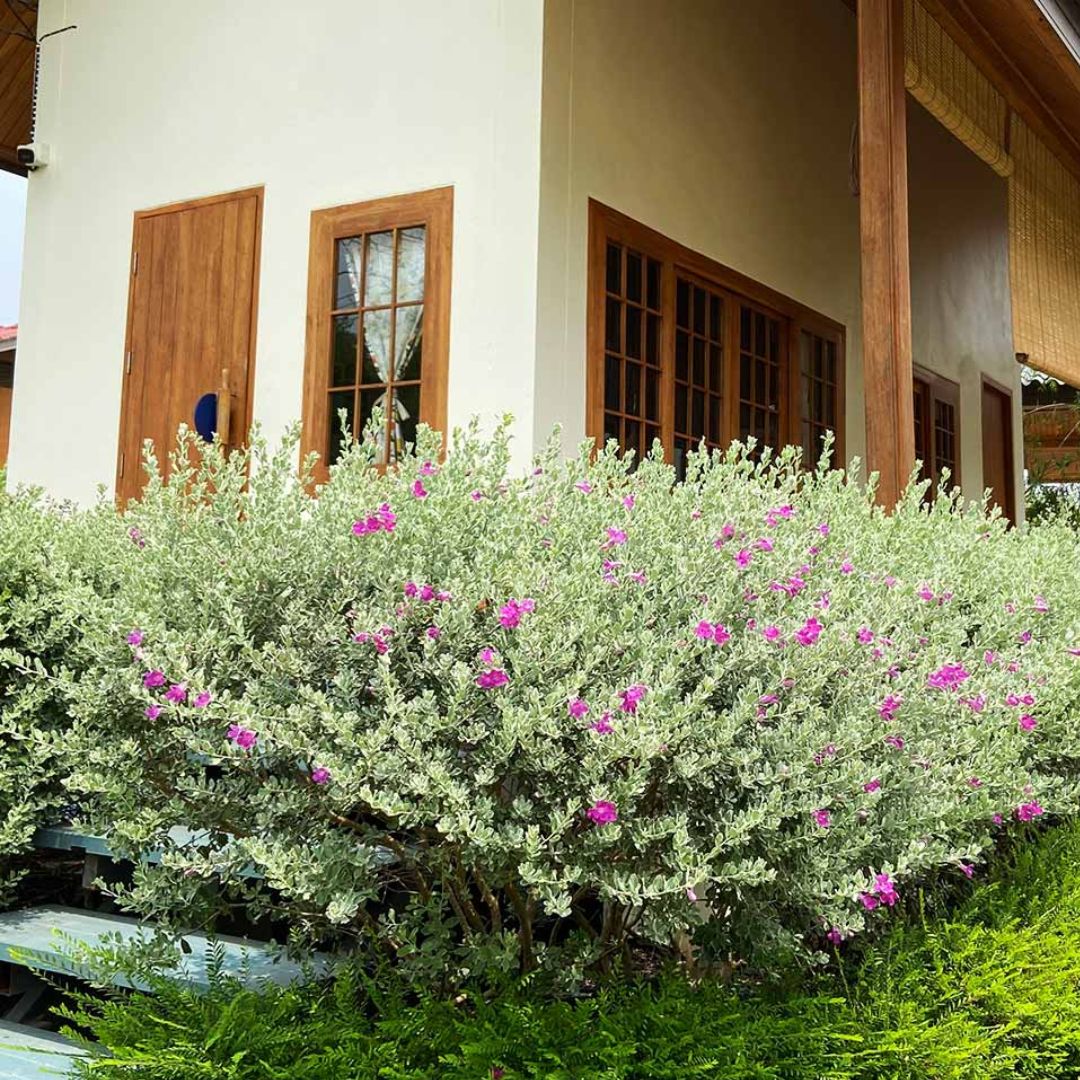'They add color and depth to the garden' – 5 companion plants for roses to support and protect your blooms
These companion plants for roses not only help keep your flowers free from pests, and even bloom during the rose's downtime

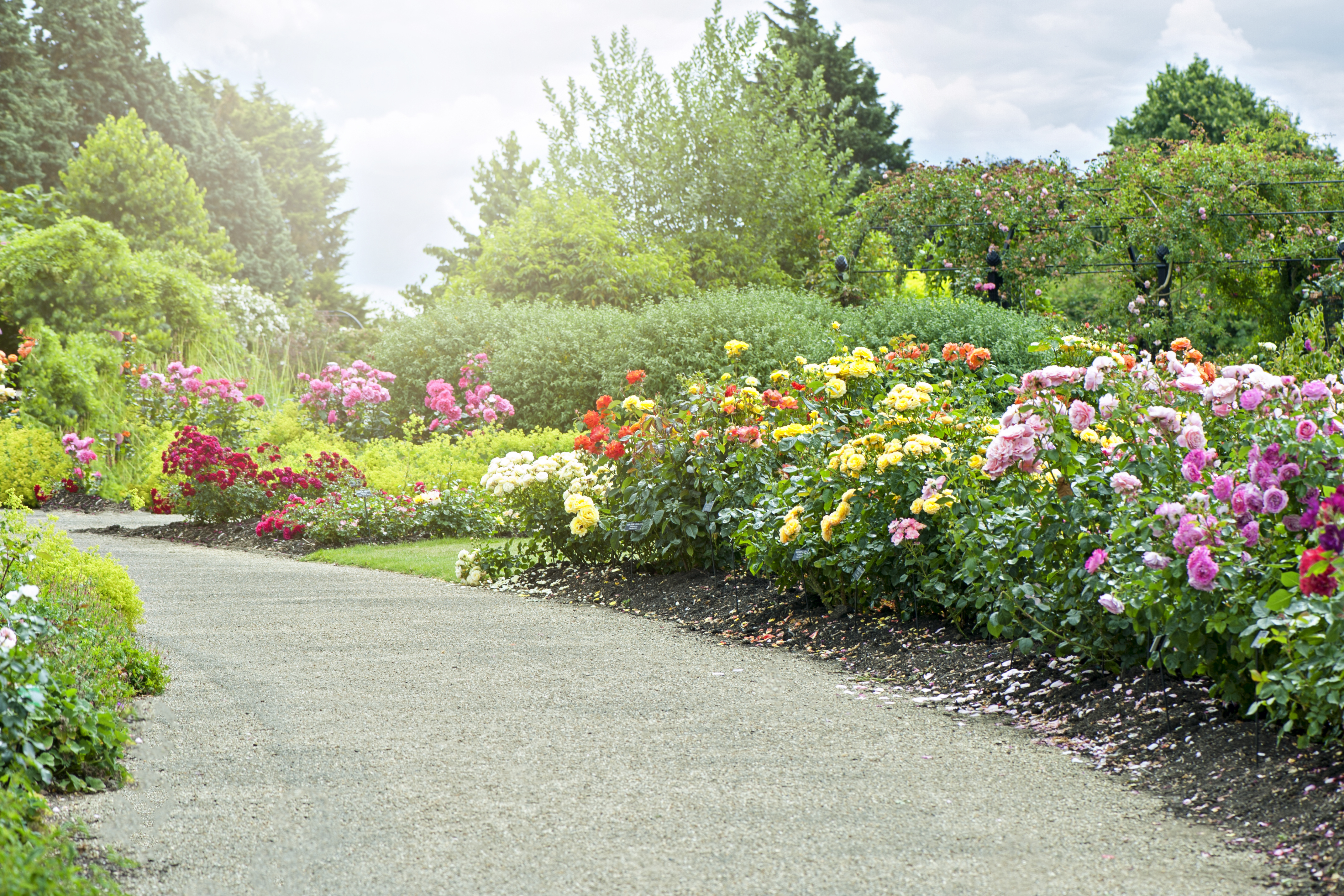
Everyone enjoys a full, robust garden throughout the year but every plant and flower has its own blooming period. One of the many benefits of companion gardening is that by planting certain specific varieties with roses, you can ensure that the garden looks full, lush, and vibrant, no matter the season or weather. Plus, these also aid in the well-being and health of your precious rose plants.
'Companion plants near roses can play a vital role in enhancing your rose garden,' says Reese L Robins, a gardening expert at Just Pure Gardening. 'Well-chosen companions can act as natural pest controllers, attract pollinators, and improve soil quality.'
If you're looking to add more interesting varieties to your backyard then these suggestions by top experts are ones to take note of.
Keep in mind before planting
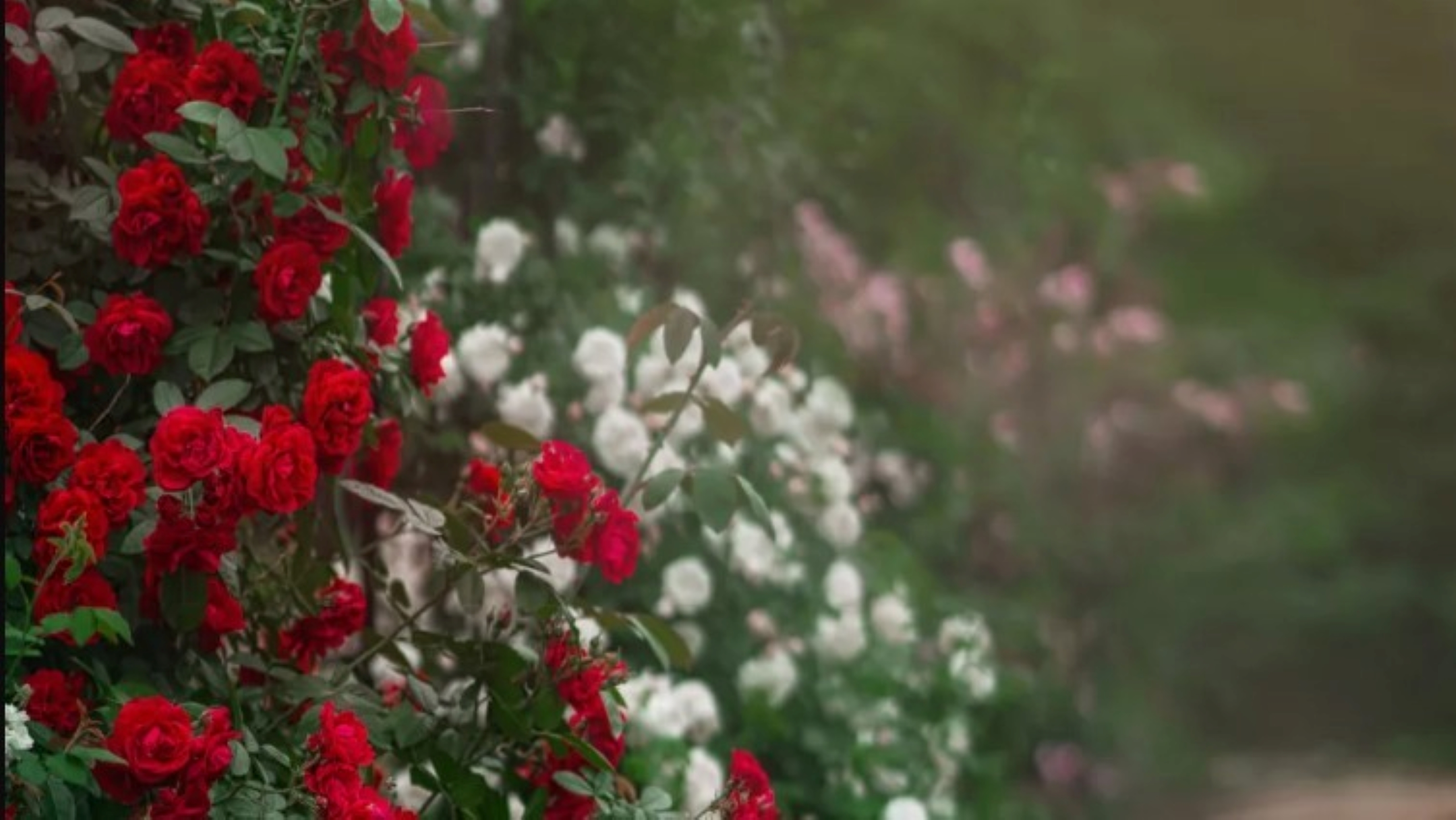
While you may be interested in boosting your modern garden's aesthetic, there are a few things you should consider before adding more plants and flowers.
'One of the most important things to consider when choosing your roses companion plant(s) is whether it requires lots of water, nutrients, and space to thrive,' says Kat Aul Cervoni , landscape designer and founder of Staghorn NYC and The Cultivation by Kat. 'If it does, this will not be a good companion plant to your rose, as they tend to be heavy feeders and will be diminished if put under too much competition with surrounding plants. Secondly, many roses are known to be a target for several insect and fungal maladies, so selecting companion plants that help deter or prevent them will be of huge benefit to your rose. Good airflow is also important for roses as it helps prevent fungal issues.'
1. Allium
Bring in more charm and add layering to your flower beds with alliums. These bright purple flowers have a globe-like structure and look great with early roses.
'Ornamental alliums make a wonderful companion plant to roses as they help deter aphids, aphid flies, and many other pests that can harm roses,' says Kat. 'Alliums come in a variety of sizes and cultivars that bloom anywhere from early summer to early fall. They prefer full sun and consistent moisture to thrive. These beauties also leave behind lovely, sculptural seedheads keeping interest going well beyond their bloom period.'
The Livingetc newsletters are your inside source for what’s shaping interiors now - and what’s next. Discover trend forecasts, smart style ideas, and curated shopping inspiration that brings design to life. Subscribe today and stay ahead of the curve.
2. Lavender
'Aromatic and attractive, lavender is a superb companion for roses,' says Reese L Robins. 'Its captivating fragrance not only deters pests like aphids but also masks the enticing scent of roses, making them less appealing to these invaders. Also, the essential oils in lavender possess antifungal properties, aiding in the suppression of powdery mildew; a common fungal disease that can harm roses. Additionally, lavender roots enhance drainage and aeration in the soil, benefiting both plants.'
'Plant lavender and roses 18 to 36 inches apart to promote airflow,' says Reese. Wondering when to prune lavender? 'Prune lavender in early spring and remove spent blooms to encourage continuous flowering,' says Reese. 'Water both plants thoroughly, avoiding overwatering, as they both dislike waterlogged soil.'
3. Geraniums
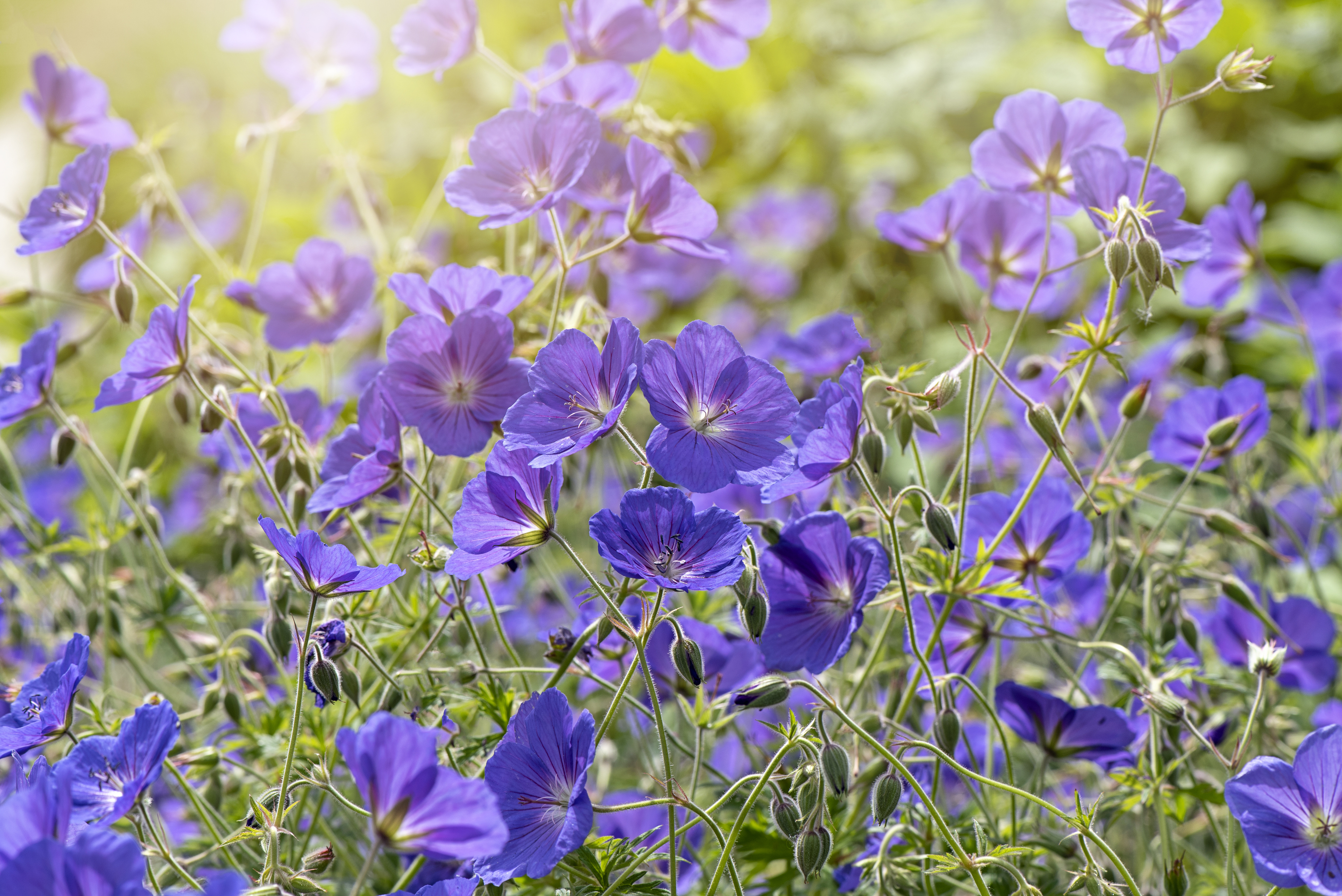
Geraniums are one of the best plants for small gardens and companion planting. These purple-blue varieties look good with many various types of roses, while pale pink Geraniums look especially pretty with crimson roses.
'Annual geranium varieties with scented leaves make great companion plants for roses,' says Kat. 'The aptly-named rose-scented geraniums are especially popular as their scent so beautifully compliments roses. Geraniums prefer full sun and also appreciate deadheading to stimulate more blooms.'
'The nectar produced by geranium flowers is a magnet for a variety of pollinators, including bees, hoverflies, and other beneficial insects,' says Reese. 'This not only enhances the overall beauty of your garden but also plays a crucial role in boosting the rose fruit set. Plant geraniums and roses 8 to 12 inches apart to foster their harmonious coexistence and allow proper airflow. Planting them too close together can create competition for light and water. Deadhead geraniums regularly to encourage continuous flowering and prune them as needed to maintain their shape.'
4. Catmint
Add to your flower bed with Catmint – the abundant blue flowers that can provide a lovely ground cover to your garden.
'Perhaps the most popular and classic companion planting to roses is nepeta/catmint and there are so many good reasons for it,' says Kat. 'One of the easiest perennials to grow, catmint also attracts predatory insects like ladybugs and lacewings which feed on pests including aphids. These easy-keepers bloom their hearts out from mid-to-late spring typically until frost and require almost no care. Simply plant in full sun and at the front of the border and enjoy.'
'The nectar produced by catmint flowers attracts beneficial insects such as bees, hoverflies, green lacewings, and many other pollinators and predators,' says Reese. 'Thriving in well-drained soil and full sun, similar to roses, catmint is a low-maintenance plant that is easy to care for. To ensure that both catmint and roses receive enough sunlight, plant them 12 to 24 apart. To promote more flowering, you can prune catmint after the first bloom and deadhead the spent blooms. Water catmint only when the soil feels dry to the touch, as it does not like wet soil.'
5. Sage
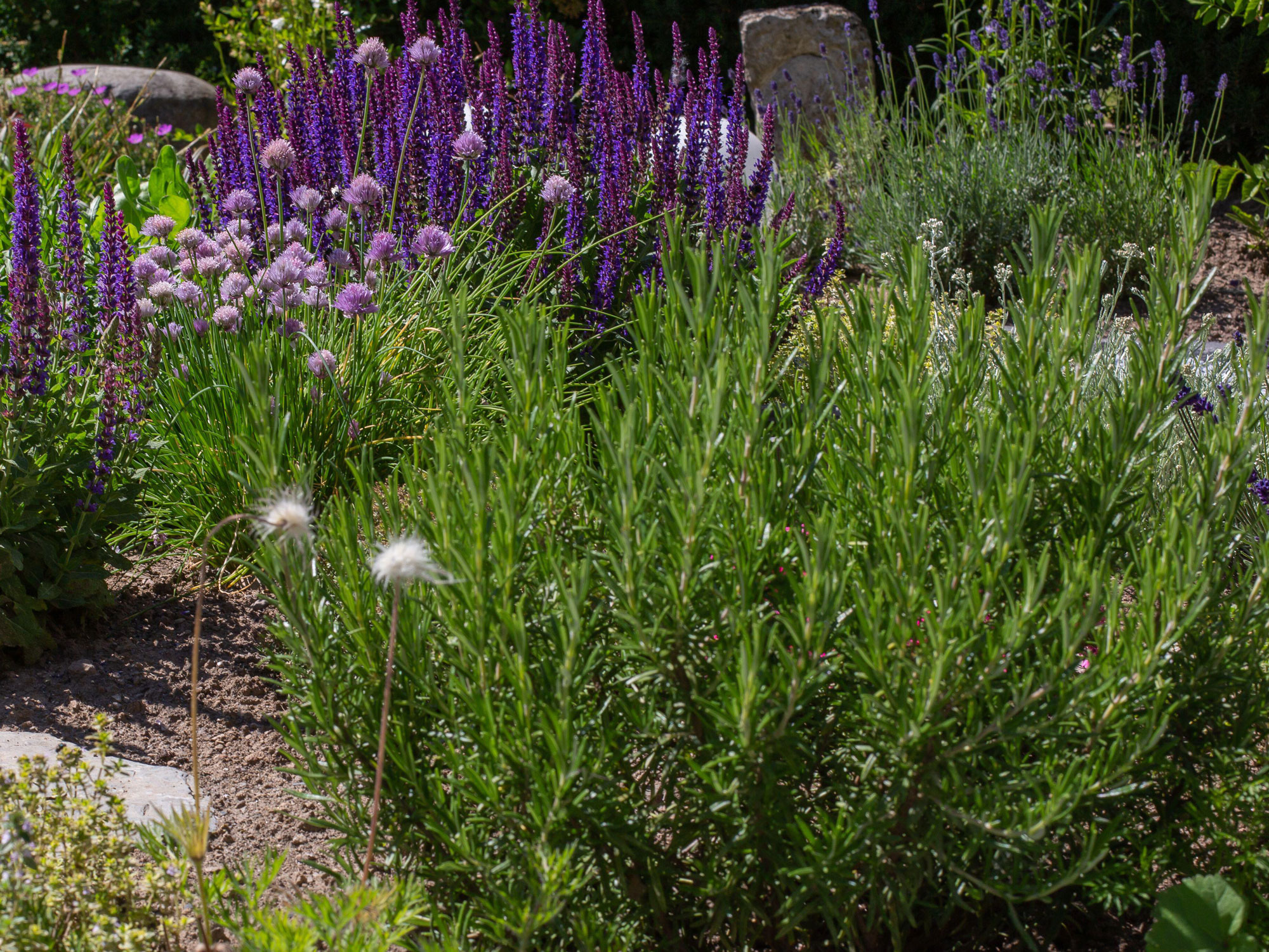
Sage is a plant that can withstand heat and cold, and is a useful variety to have due to its hardiness.
'Beyond its vibrant blooms and ability to attract pollinators, sage is an excellent companion for roses due to its pest-deterring properties,' says Reese. 'The strong scent of sage repels insects such as aphids, whiteflies, and Japanese beetles. To ensure their mutual success, plant sage and roses 12 to 18 inches apart to allow for good airflow. This helps to prevent the spread of diseases. Prune sage after its blooming period to encourage new growth. Deadheading spent blooms can also help to prolong the flowering season.'
Plants to avoid planting with roses
Companion plants aside, Kat warns against these 7 plants to avoid in garden.
1. Large trees and shrubs: Avoid planting these too close to roses as they cast unwanted shade and also will create too much competition for water and nutrients
2. Vegetables: Keep your veggie garden at a distance from your rose shrubs as these often attract unwanted pests and diseases that your rose(s) may be susceptible to.
3. Grasses: Careful when planting grasses near roses as they tend to have vast root systems that can steal nutrients, and particularly water from your roses
4. Peonies: While the combo of these two garden beauties is undeniable, give these two plant types some distance in the garden bed as peonies are quite hungry and thirsty plants and the competition between the two could weaken them
5. Dahlias: Similar to peonies, dahlias are very hungry and thirsty plants. If planting in the same garden, be sure to give plenty of space between them so they do not steal nutrients and water from each other
6. Fennel: This beautiful feathery and delicious herb can attract aphids, so be sure not to plant it near your roses
7. Black Walnut Trees: If you have any of these trees on your property, be sure to plant your roses at a distance from them so that their growth-inhibiting chemical, juglone, can’t reach them.

Aditi Sharma Maheshwari started her career at The Address (The Times of India), a tabloid on interiors and art. She wrote profiles of Indian artists, designers, and architects, and covered inspiring houses and commercial properties. After four years, she moved to ELLE DECOR as a senior features writer, where she contributed to the magazine and website, and also worked alongside the events team on India Design ID — the brand’s 10-day, annual design show. She wrote across topics: from designer interviews, and house tours, to new product launches, shopping pages, and reviews. After three years, she was hired as the senior editor at Houzz. The website content focused on practical advice on decorating the home and making design feel more approachable. She created fresh series on budget buys, design hacks, and DIYs, all backed with expert advice. Equipped with sizable knowledge of the industry and with a good network, she moved to Architectural Digest (Conde Nast) as the digital editor. The publication's focus was on high-end design, and her content highlighted A-listers, starchitects, and high-concept products, all customized for an audience that loves and invests in luxury. After a two-year stint, she moved to the UK and was hired at Livingetc as a design editor. She now freelances for a variety of interiors publications.
